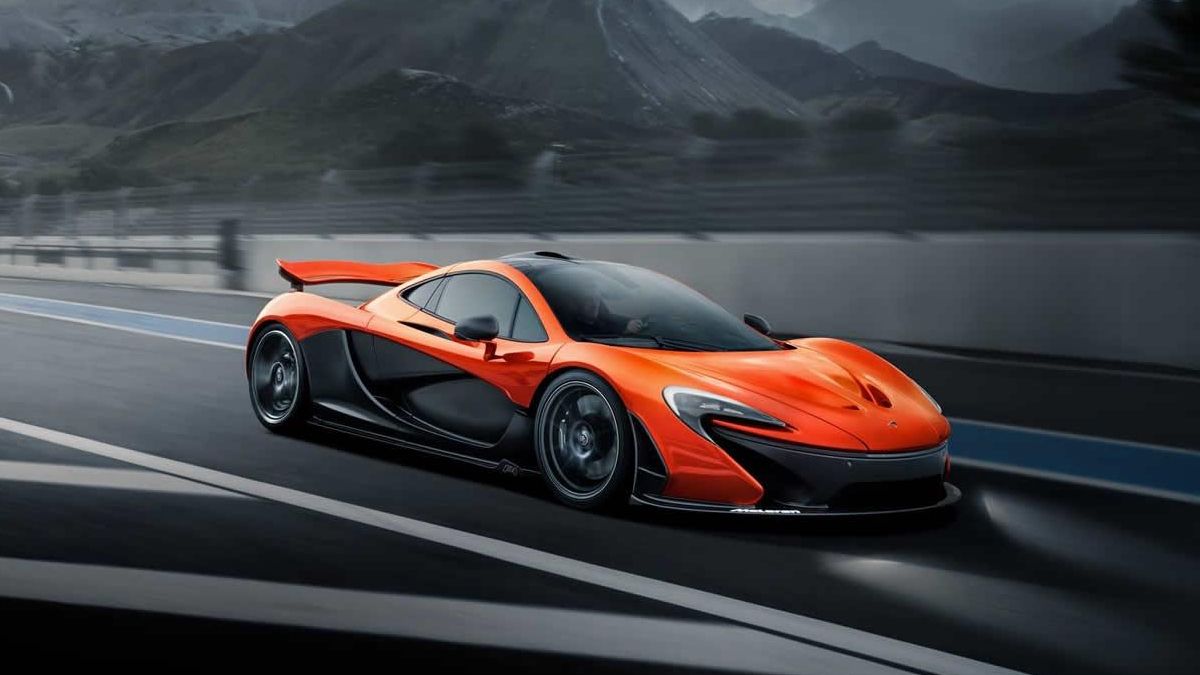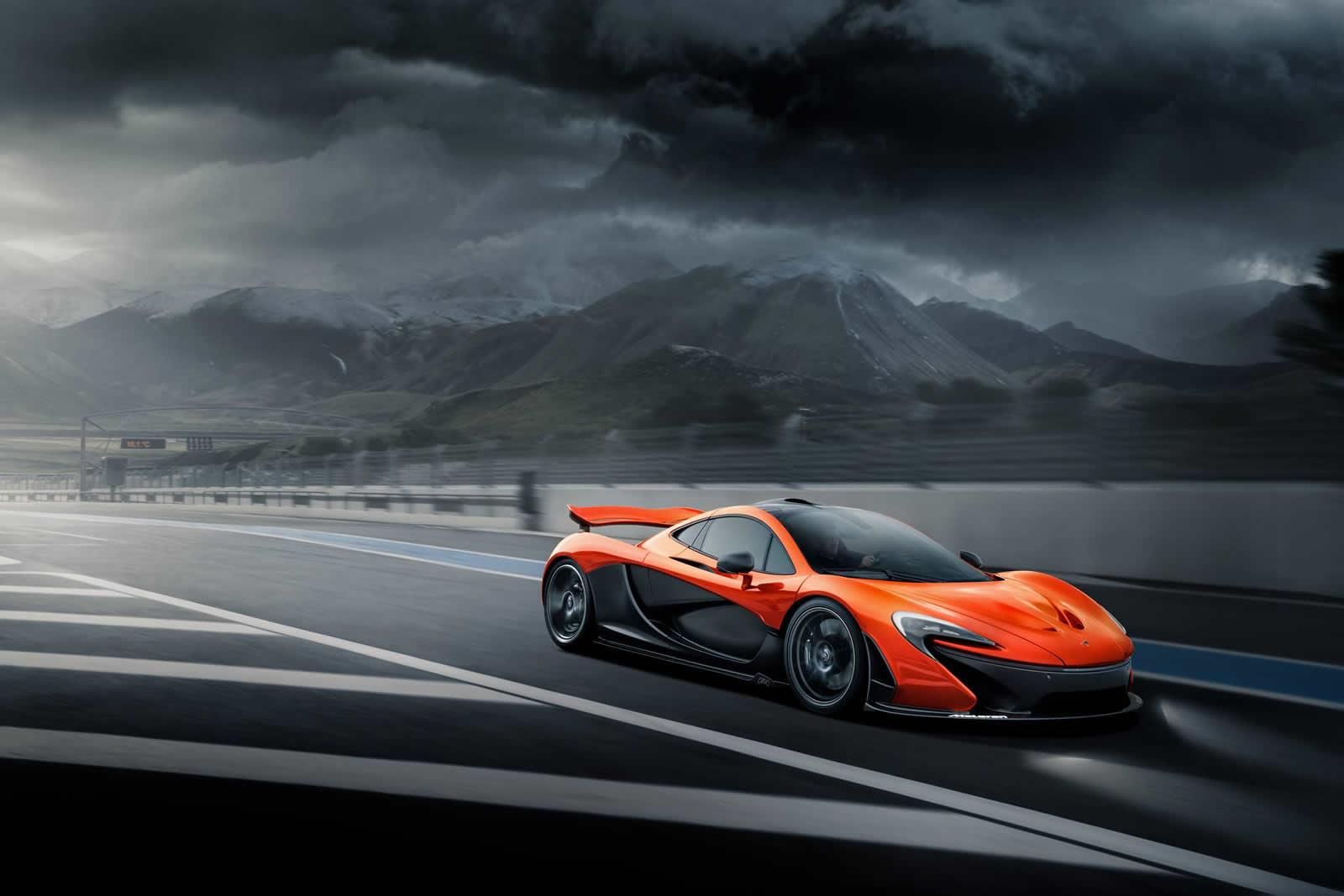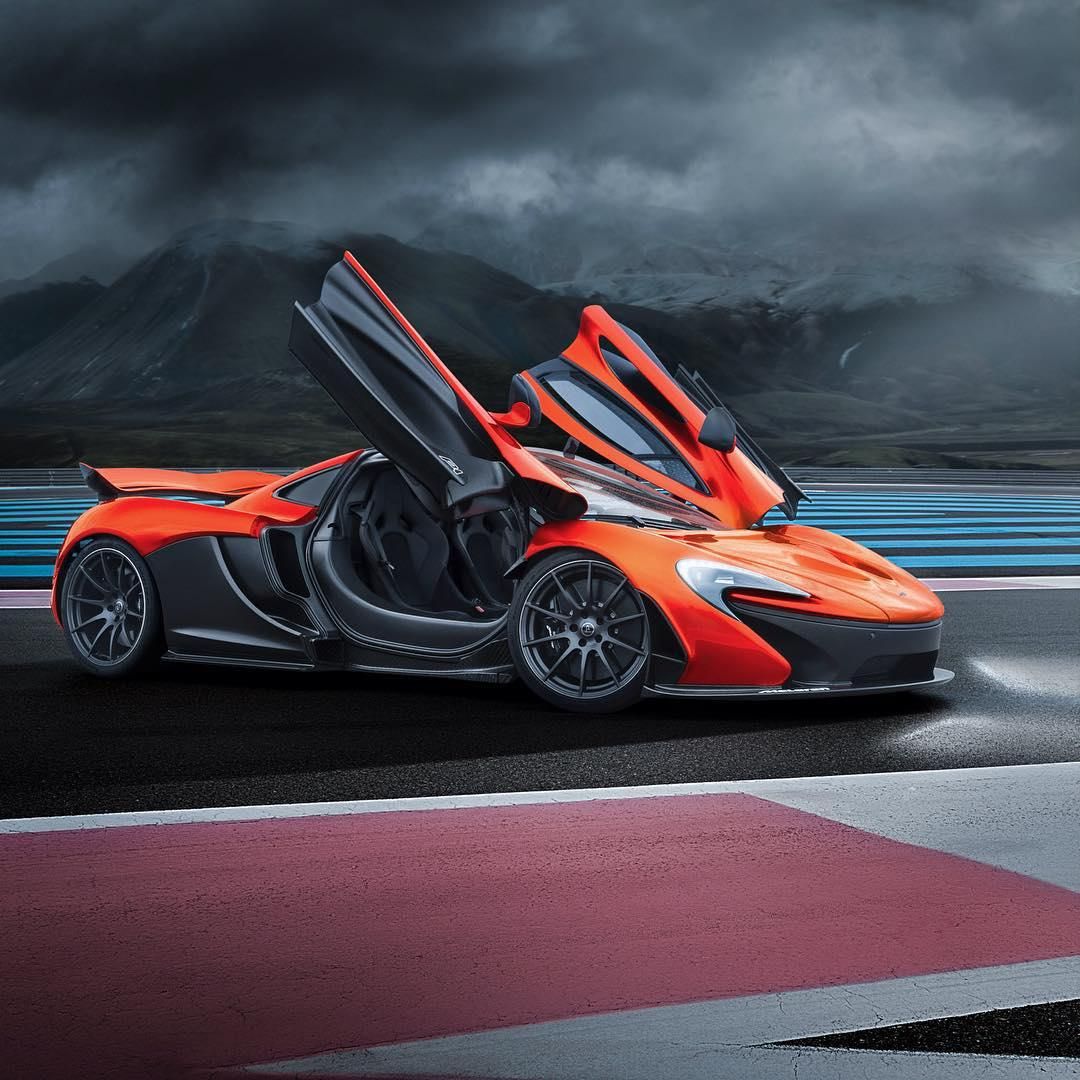In 2013, McLaren->ke284 rolled out the 2014 McLaren P1, its first full-fledged supercar->ke177 since the 1993 McLaren F1. Equipped with a hybrid drivetrain and introduced about the same time as the 2014 Ferrari LaFerrari and 2014 Porsche 918 Spyder, the P1 became part of the first generation of hybrid->ke147 supercars. With production limited to only 375, the P1->ke4608 sold out in no time. However, because each models is hand-built at McLaren's plant in Woking, the Brits have yet to assemble all P1s as of mid-2015. Although most P1s are special to the extent that they were taken to the McLaren Special Operations (MSO) division for custom paint jobs and interiors, this example stands out in a crowd.
Though it has also received a bespoke paint and a chrome finish, the reason why this P1 is truly unique is that it features exposed carbon-fiber parts. Granted, it's not the first P1 to sport unpainted carbon fiber (McLaren built 20 full-carbon P1s), but it's a combination we don't get to see very often, even on very expensive hypercars.
There's no word as to who took delivery of this beauty or how much he (or she) paid for it, but it's a sight to behold. And since most of us probably won't get to see this particular P1 in the metal, I decided it deserves a full review of its own.
Continue reading to learn more about the McLaren P1 By MSO With Exposed Carbon-Fiber Body Sides.
2015 McLaren P1 By MSO With Exposed Carbon-Fiber Body Sides
- Make: Array
- Model: 2015 McLaren P1 By MSO With Exposed Carbon-Fiber Body Sides
- [do not use] Vehicle Model: Array
Exterior
The owner of this P1 went with a special paint that includes an orange tint over a chrome finish. However, the special wrap doesn't cover the entire body, as the side panels feature bare carbon fiber. The result is both gorgeous and unique, making this supercar stand out among other P1s, including MSO-made specials. It's the kind of car that you could see approaching from miles away, or steal the show at any supercar gathering, no matter the competition. Aside from the paint job, everything else is standard P1 stuff.
Interior
Note: 2015 McLaren P1 by MSO interior shown.
McLaren had nothing to say about this car's interior, but I'd be surprised to learn the owner ordered it with no bespoke detailing whatsoever. Be that as it may, the standard P1 comes with acres of carbon fiber, leather and Alcantara, carbon-fiber racing seats, and a sports steering wheel. If that doesn't make customers happy, I don't know what will.
Drivetrain
As it has been the case with all MSO-modified P1s so far, the drivetrain remained unaltered. There's no need to be disappointed though, as nothing about the P1's powertrain is disappointing. As a brief reminder, the supercar is motivated by McLaren's award-winning 3.8-liter V-8 that's combined with an electric motor.
The conventional engine pumps out 727 horsepower and 531 pound-feet of torque, while the in-house-developed electric motor generates 176 horses and 192 pound-feet. When using both, the P1 benefits from a total output of 903 horsepower and 722 pound-feet of twist. The transmission is a race-spec, seven-speed dual-clutch unit.
The performance figures are equally impressive -- the car sprints from 0 to 62 mph in 2.8 seconds, hits 124 mph in 6.8 ticks, and charges to 186 in only 16.5 seconds. Top speed is limited at 217 mph, which is more than enough to outgun most modern-day supercars.
Juice for the electric motor comes from a 324-cell, lithium-ion battery pack located behind the seats. The battery can be charged by the engine or through a plug-in system, which will fully charge it in two hours. The supercar will run for 19 miles on electricity alone and return 16 mpg and 20 mpg highway when using the gasoline engine only.
Prices
Before it became sold out, the McLaren P1 retailed from $1.15 million, but it's safe to assume that this bespoke supercar cost a bit more than that. Depending on options and custom work, MSO-modified P1s can fetch in excess of $1.6 million. I believe this is the case here as well. Although McLaren still has a few P1s to build and deliver, the supercar is already sold out. Production is capped at 375 units.
Competition
2014 Ferrari LaFerrari
2013 was a great year for hybrid supercars, and the P1 isn't the only creation responsible for that. Introduced at about the same time as the P1, the LaFerrari->ke4626 became Ferrari's first vehicle to use a hybrid drivetrain. Much like its British rival, the LaFerrari gets its juice from a high-revving gasoline powerplant and an electric motor. The main plant is a 6.3-liter V-12 that produces a whopping 789 horsepower and 516 pound-feet of torque. The KERS unit adds 161 horses and takes total output up to 950 horsepower and 664 pound-feet of torque.
Ferrari claims it will do 62 mph in less than three seconds, reach 124 mph in under seven seconds, 186 mph in 15 seconds, and hit a top speed in excess of 217 mph. Independent tests have revealed that the LaFerrari can hit 60 mph in as quick as 2.5 seconds. Maranello also states that the car has lapped its Fiorano Test Circuit in 1:19 minutes, which is faster than any other road-legal car Ferrari has ever produced. Production of the LaFerrari is limited to 499 units, all of which have been sold for more than $1.4 million each. Like the P1, several LaFerraris have been delivered with custom paint jobs and interiors.
Read more about the Ferrari LaFerrari here.
2014 Porsche 918 Spyder
Also unveiled in 2013, the Porsche 918 Spyder->ke3629 completes the hybrid supercar trio released that year. Sporting different exterior styling than other Porsche->ke1 products, and a race-inspired interior, the 918 Spyder uses a 4.6-liter V-8 and a pair of electric motors. Total output is 887 horsepower and 940 pound-feet of torque that travels to the wheels through a seven-speed PDK.
The supercar needs only 2.8 seconds to hit 62 mph, 7.9 ticks to reach 124 mph, and 23 seconds to achieve 186 mph. When equipped with the Weissach Package, these figures drop to 2.6, 7.2, and 19.9 seconds, respectively. Top speed is set at 211 mph for both versions. Porsche claims the 918 Spyder smashed the Nurburgring->ke999 record for road-going cars with a 6:57-minute lap.
The 918 was less exclusive and significantly more affordable than both the LaFerrari and P1. Only 918 were built and sold for $845,000 before options.
Find out more about the Porsche 918 Spyder here.
2013 Lamborghini Veneno
The Lamborghini Veneno->ke4623 might not be a hybrid and is no match for all the supercars above in terms of power and speed, but it's the perfect example as to how far the customization industry has evolved. Launched as a limited-production car based on the Aventador,->ke3624 the Veneno feature radical body lines and a 6.5-liter V-12 massaged to deliver 740 horsepower, 50 horses more than the standard Aventador.
Lamborghini->ke44 built only five of these supercars, three of which have been sold to private customers for a whopping $4.5 million each, making the Veneno the most expensive production car in the world. A 2015 Lamborghini Veneno Roadster version was also offered in a limited run of nine examples and for about the same price.
Read more about the Lamborghini Veneno here.
Conclusion
Like many MSO-modified P1s before it, this supercar is a statement of what factory customizing divisions can offer nowadays. Sure, all P1s are special in their own way (I doubt there are two identical cars out there), but everything gets better with exposed carbon fiber. And with the 20 unpainted, carbon-fiber P1s sold out a long while ago, this example is actually the closest thing to having a clear coat over a carbon shell.
The big issue with this car is that you can't buy it. For two reasons. First, someone already took deliver of this car. Second, the P1 is sold out.






